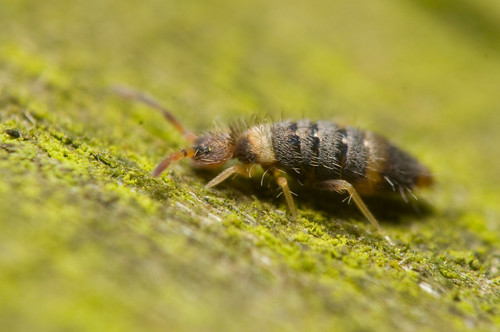The instructions were quite clear '
To detect the odour, prod the animal gently...' I duly obliged and was then aware of a pronounced smell of garlic. Who'd have thought it, a snail that comes ready-garlicked!
And so the BTO has started on the land-based molluscs, a new group for me and so it is going to be a slow learning curve. With
Cepaea nemoralis and
Helix aspersa dealt with, and quickly discovering that you can't key out most juvenile snails, I tackled the small, flattened snail that had come from the old ruin. It quite readily keyed out to an
Oxychilus species (one of four), the spire shape and ground colour suggesting it was one of two possibilities. Only one of these produces a pronounced smell of garlic when agitated (one other produces a fainter smell sometimes) and this, together with the development of the whorls, told me it was
Oxychilus alliarius - needless to say this is the most widespread of these small snails.
What next? A trout that when prodded smells of orange, a freshwater shrimp that comes ready potted or a lamb that smells of mint (of course, can't count the lamb it isn't a wild animal).
 Two Oystercatchers clearly visible from the Plateau at The Lodge. The above shot digiscoped with the mighty power of my Swarovski! Below you can see where Derek's Whites Eggs Pit is as viewed from our spot on the Plateau (its the watery streak in the middle-distance).
Two Oystercatchers clearly visible from the Plateau at The Lodge. The above shot digiscoped with the mighty power of my Swarovski! Below you can see where Derek's Whites Eggs Pit is as viewed from our spot on the Plateau (its the watery streak in the middle-distance).



